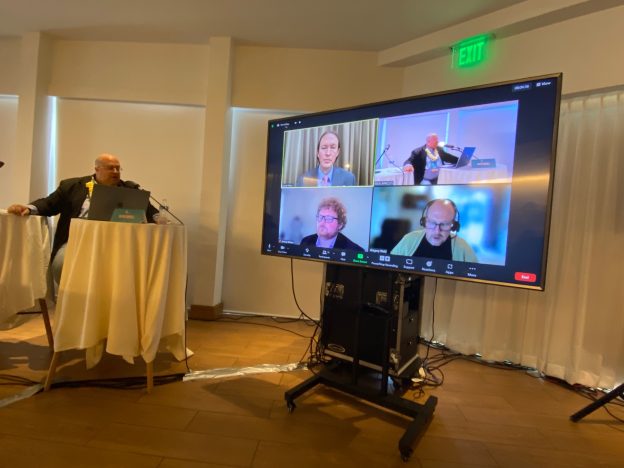米国移民局(USCIS)は、主たる申請者のH/Lビザ申請と、その家族(H-4/L-2)による申請(EAD(労働許可証)を含む)を同時に提出した場合、それらの申請を一括して審査することに合意しました。
2023年1月25日より、I-129フォームとともに、H-1B/L-1家族のI-539フォーム(非移民ステータスの延長/変更)申請、およびI-765フォーム(労働許可)申請が提出された場合、これらの申請も一括して審査されることになりました。この一括審査は、通常のH-1B/L-1申請と、特急審査申請されたH-1B/L-1申請の、両方に適用されます。
これは、従来のプロセスに戻るものであり、H-4/L-2のステータス延長申請に加え、H-4/L-2へのステータス変更申請についても適用されます。施行は2023年1月25日から2年間の予定です。
この変更は、Hビザ保持者およびLビザ保持者の家族用ビザについて長期間に渡り争っていたEdakunni v. Mayorkasが和解合意したことによるものです。
トランプ政権時、USCISは、生体認証の義務付けや、I-129フォームとI-539フォームの一括審査を廃止するなどの変更を実施し、これは、家族用ビザの申請処理にかかる時間を長引かせる結果となりました。
バイデン政権下では、家族用ビザの申請の処理時間を短縮するためにいくつかの変更を行い、2021年5月17日から、H/L/Eビザ申請者の家族によるI-539申請にかかる生体認証の要件が一時停止になっていました。そして2021年11月10日、USCISはShergill v. Mayorkasの和解合意に達し、L/Eビザの配偶者の就労を許可し、特定のI-765更新申請について就労許可を自動延長することとなりました。
今後この施行期間はH-4/L-2ビザのI-539/I-765申請を希望する全ての申請者は、主たる申請者(H-1B/L-1)のI-129申請とともに審査が行われることになります。これにより、H/Lビザ申請者の家族の審査にかかる時間が従来より短くなることを意味します。さらに、生体認証の要件も免除されたため、就労許可(I-765)やステータスの変更/延長(I-539)の申請の審査についても、主たる申請者のビザ申請(I-129)の審査と同時か、そのすぐ後に行われるものと思われます。
Starting January 25, 2023, USCIS will adjudicate I-539 and I-765 applications for H-4 and L-2 dependents when those applications are filed concurrently with the I-129 petition. The bundling of those applications applies to both regular and premium processed H-1B or L-1 petitions.
USCIS will return to its historical process of adjudicating applications for H-4 and L-2 dependents when the Forms I-539 (application to change or extend status) and I-765 (employment authorization application) are filed concurrently with the H-1B or L-1 petition. In addition to L-2 or H-4 extensions, dependents seeking to change to H-4 or L-2 status using Form I-539 will also benefit from the bundled adjudication, provided that the Form I-129 is filed concurrently. The practice of bundled adjudications will be in effect for two years, effective January 25, 2023.
This shift in practice is the result of a settlement agreement in Edakunni v. Mayorkas, which challenged the lengthy adjudications for H-4 and L-2 dependents.
Under the Trump administration, USCIS implemented several changes – requiring biometrics appointments and de-coupling the adjudication of I-539 applications filed together with Form I-129 – that led to extensive processing times for H-4 and L-2 dependents. USCIS, under the Biden administration, has taken several steps to improve the processing time for dependent applications. On May 17, 2021, USCIS suspended the biometrics appointment requirement for those filing an I-539 requesting H-4, L-2, or E dependent nonimmigrant status. On November 10, 2021, USCIS reached a settlement agreement in Shergill v. Mayorkas that permits L and E spouses to work incident to status, and provides automatic extensions of employment authorization for certain I-765 renewal applications.
SWLG ANALYSIS. For all clients filing an H-4 or L-2 change of status and EAD application, your case will now be adjudicated concurrently with the principal’s I-129 (H-1b or L-1) case. This means that the spouse or dependents won’t need to wait long periods of time before their case is adjudicated. The biometrics requirement for these cases is also waived at this time so we would expect EAD and change/extension of stay (I-539) applications to be adjudicated at the same time or soon thereafter the underlying I-129 is adjudicated.


